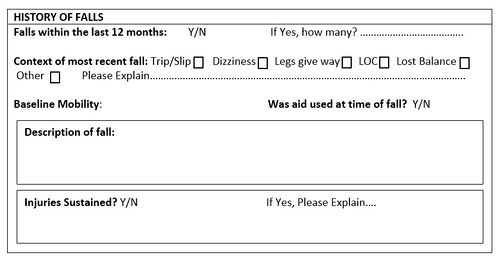Some Of Dementia Fall Risk
Some Of Dementia Fall Risk
Blog Article
The Best Guide To Dementia Fall Risk
Table of ContentsNot known Facts About Dementia Fall RiskDementia Fall Risk - An OverviewThe Best Guide To Dementia Fall RiskAn Unbiased View of Dementia Fall Risk
A loss threat analysis checks to see exactly how most likely it is that you will certainly fall. The analysis typically consists of: This consists of a series of concerns about your general health and if you've had previous drops or problems with equilibrium, standing, and/or strolling.Treatments are recommendations that might reduce your threat of dropping. STEADI consists of 3 steps: you for your danger of dropping for your danger factors that can be enhanced to try to avoid drops (for instance, balance issues, damaged vision) to minimize your risk of falling by utilizing reliable methods (for instance, supplying education and resources), you may be asked a number of concerns including: Have you dropped in the past year? Are you stressed regarding falling?
If it takes you 12 secs or even more, it might mean you are at greater risk for an autumn. This test checks strength and balance.
The settings will get more difficult as you go. Stand with your feet side-by-side. Relocate one foot halfway ahead, so the instep is touching the big toe of your other foot. Relocate one foot fully in front of the various other, so the toes are touching the heel of your other foot.
Getting The Dementia Fall Risk To Work
Most falls happen as a result of numerous adding factors; therefore, handling the danger of dropping starts with determining the variables that add to drop threat - Dementia Fall Risk. Several of the most appropriate danger factors include: History of prior fallsChronic medical conditionsAcute illnessImpaired stride and balance, reduced extremity weaknessCognitive impairmentChanges in visionCertain high-risk medicines and polypharmacyEnvironmental factors can likewise boost the threat for falls, including: Inadequate lightingUneven or damaged flooringWet or unsafe floorsMissing or damaged handrails and get hold of barsDamaged or improperly equipped equipment, such as beds, wheelchairs, or walkersImproper use assistive devicesInadequate guidance of individuals living in the NF, consisting of those who show hostile behaviorsA successful loss threat monitoring program requires a thorough professional evaluation, with input from all participants of the interdisciplinary team

The care plan should additionally consist of interventions that are system-based, such as those that promote a secure atmosphere (ideal lighting, hand rails, order bars, and so on). The performance go to this website of the treatments ought to be assessed periodically, and the care strategy revised as essential to show changes in the fall threat evaluation. Executing an autumn threat administration system making use of evidence-based ideal practice can decrease the occurrence of falls in the NF, while more info here limiting the possibility for fall-related injuries.
An Unbiased View of Dementia Fall Risk
The AGS/BGS standard suggests screening all grownups aged 65 years and older for loss threat each year. This screening contains asking individuals whether they have dropped 2 or even more times in the past year or sought medical interest for a fall, or, if they have not dropped, whether they really feel unstable when strolling.
Individuals who have actually fallen once without injury ought to have their balance and stride evaluated; those with stride or balance problems need to get extra evaluation. A background of 1 fall without injury and without gait or equilibrium issues does not require more analysis past ongoing yearly loss threat testing. Dementia Fall Risk. A fall threat analysis is needed as part of the Welcome to Medicare evaluation

The 6-Second Trick For Dementia Fall Risk
Documenting a drops history is one of the top quality indications for fall avoidance and monitoring. copyright medications in specific are independent predictors of drops.
Postural hypotension can frequently be relieved by lowering the dose of blood pressurelowering medications and/or stopping drugs that have orthostatic hypotension as a side effect. Use of above-the-knee assistance hose pipe and copulating the head of the bed boosted might also decrease postural reductions in high blood pressure. The suggested aspects of a fall-focused physical assessment are revealed in Box 1.

A Yank time higher than or equal to 12 go to the website secs suggests high loss danger. Being incapable to stand up from a chair of knee elevation without utilizing one's arms shows raised fall danger.
Report this page